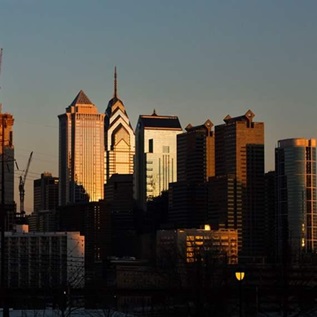Pew: Philadelphia's Middle Class Now More Stable and Diverse but Frustrations Remain
New analysis of U.S. Census Bureau data by The Pew Charitable Trusts shows that Philadelphia's middle-class population has stabilized at approximately 42 percent of total residents after a prolonged period of decline. In addition, a poll conducted by Pew found that today's middle-class Philadelphians often feel neglected by city government, and frustrated by city taxes and the quality of the school system.
Key shifts in the nature of the middle-class population in Philadelphia described in the report, Philadelphia's Changing Middle Class: After Decades of Decline, Prospects for Growth, include:
- Population Stabilization: Over the past four decades, as Philadelphia's overall population fell by nearly 22 percent, the city lost more than 4 in 10 of its middle-class adults. However, data shows that the city's middle class, as defined by an income ranging from $41,258 to $123,157, has remained essentially stable since 2000 while the makeup of that population has continued to grow more diverse.
- Racial Diversity: In 1970, 74 percent of the adults living in middle-class households in the city were white and 26 percent were black. In 2010, the makeup was 54 percent white, 42 percent black and 4 percent Asian/other. (In this data, Hispanics are counted as whites, blacks, or members of other racial groups.)
- Education: Thirty-five percent of the city's middle class have college or graduate degrees and only 8 percent lack high school diplomas. In comparison, in the 1970s, only 8 percent had attended college and 44 percent did not have high school diplomas.
- Careers and Income: Over the 40 years studied, middle-class Philadelphians have shifted into jobs in finance and other business and professional services. Now more than half work in these fields compared to 28 percent in the 1970s. And the percentage working in manufacturing and construction fell from 33 percent to 10 percent.
- Location: In the beginning of the 1970s, more than 8 in 10 of the city's census tracts, including nearly all of Northeast Philadelphia, were predominantly middle class. By 2010, just over 3 in 10 fit that description, and they were clustered in the Northeast, the Northwest, and along City Avenue.
“Economic studies have shown that a vibrant and substantial middle class is a driver for economic and social stability in any community,” said Larry Eichel, the director of Pew's Philadelphia Research Initiative. “In the midst of budget cuts and tax fatigue, the challenge for Philadelphia is to keep and grow the middle class while still supporting lower-income residents.”
According to Pew's research, Philadelphia's middle-class residents also hold distinct views about the city. In a poll conducted by Pew in July and August 2013, residents who identified themselves as middle class:
- Gave low marks to the city's school system and supported publicly funded charter schools more than other income groups;
- Noted their intense dislike of taxes, with many preferring fewer services and lower taxes overall;
- Prioritized public safety, job creation, and education in terms of the city's top issues and expressed a willingness to leave the city if positive movement is not made on these fronts.
- Expressed a sense of being neglected by city government, noting their perception that lower or upper classes received more attention from the government.
More information about the report and the data can be found here.
###
MIDDLE-CLASS REPORT VIDEO AVAILABLE:
How do Philadelphians define middle class? Hear residents describe their views in the related video “Defining Philadelphia's Middle Class.”
The Pew Charitable Trusts is driven by the power of knowledge to solve today's most challenging problems. Pew's Philadelphia Research Initiative provides timely, impartial research and analysis on key issues facing Philadelphia for the benefit of the city's citizens and leaders.











